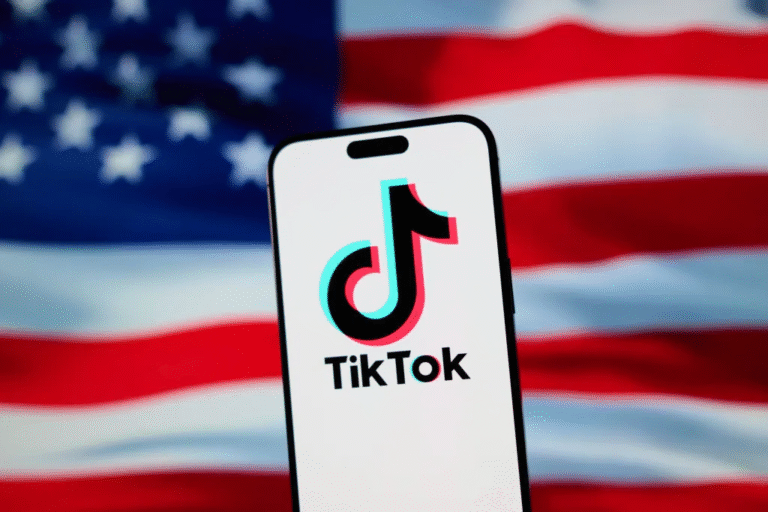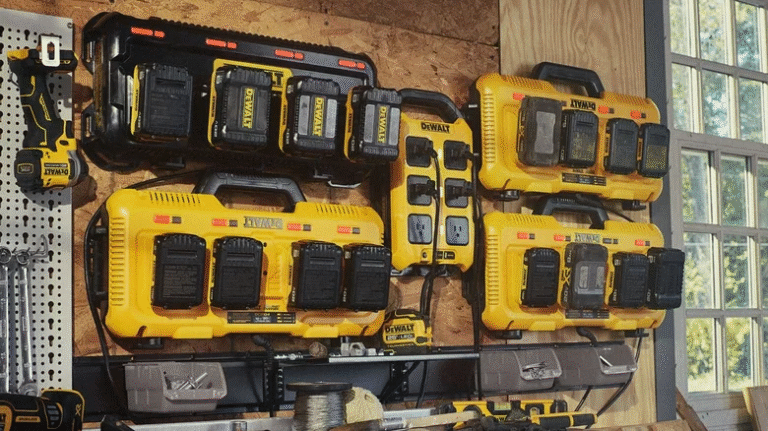DeWalt is leading the power tool industry with innovations that are designed to make work more efficient, portable, and reliable. Dependably tough tools and reliable battery systems are what DeWalt’s reputation is built on, and now the company is pushing further ahead with two new innovative charging solutions — a 4 AMP Multiport Charger and a 15 AMP Power Controller — both for professionals and DIYers who utilize multiple DeWalt batteries to get the job done.
A Closer Examination of the DeWalt 4 AMP Multiport Charger

As battery-powered tools become more common place in the workshop and on the job site, DeWalt is expanding its offerings with a handy and efficient multi-battery charging platform. The new 4 AMP Multiport Charger will charge four DeWalt batteries simultaneously, cutting downtime and keeping the user ready to go all day.
Easily configured, the charger has LEDs that show the charge level of each battery and mounting holes for easy wall-mounting — ideal for clean installs in garages or building trailers. It charges 12V MAX, 20V MAX, and FlexVolt batteries, offering broad compatibility across DeWalt’s cordless tool system.
Like most of DeWalt’s premium equipment, the 4 AMP Multiport Charger is protected by the company’s three-year limited warranty, one year of complimentary service, and 90-day satisfaction guarantee, which gives professionals purchasing new equipment peace of mind.
While DeWalt has yet to release an official release date or price tag, the new charger will roll out in the coming months as part of the company’s 2025 launch of its line of power accessories.
The Heavyweight Arrives: DeWalt’s 15 AMP Power Controller

For larger workshops or commercial clients working with a full fleet of tools, DeWalt is also preparing to release an even more powerful charging solution — the 15 AMP Power Controller.
This is a gadget designed to serve as a charging station with the capability of charging a maximum of 24 DeWalt batteries. It is achieved through six integrated AC outlets to allow users to plug in multiple multiport chargers (such as the recently launched 4-port charger) for bulk charging.
The Power Controller is indeed a power management system that allows dependable energy supply with the aid of professionals in efficient charging amidst stressful settings. It’s a dream for contractors, technicians, and workshop owners, considering the inconvenience of operating dozens of tools each day.
Although details regarding the price and the number available remain under wraps, DeWalt has promised that the Power Controller will be supported by the same industry-leading warranty and service protections as the rest of its high-end products.
A Big Year for DeWalt Fans
2025 promises to be a good year for DeWalt, with a number of new releases in the pipeline designed to enhance efficiency, organization, and productivity. From intelligent cordless tools to smart charging systems, the company is clearly doubling down on innovation in its battery ecosystem — a growing priority as the company continues to transition away from corded and gas-powered tools.
As the need for portable, battery-powered equipment grows across industries, DeWalt’s recent introductions demonstrate the company’s dedication to being an industry leader in professional tools. The 4 AMP Multiport Charger and the 15 AMP Power Controller are certain to be top choices among serious users wanting uninterrupted workflow.
In the meantime, fans and users alike will have to wait for DeWalt to unveil official launch schedules — but judging by the excitement the new products are generating, that wait could be worth it.








